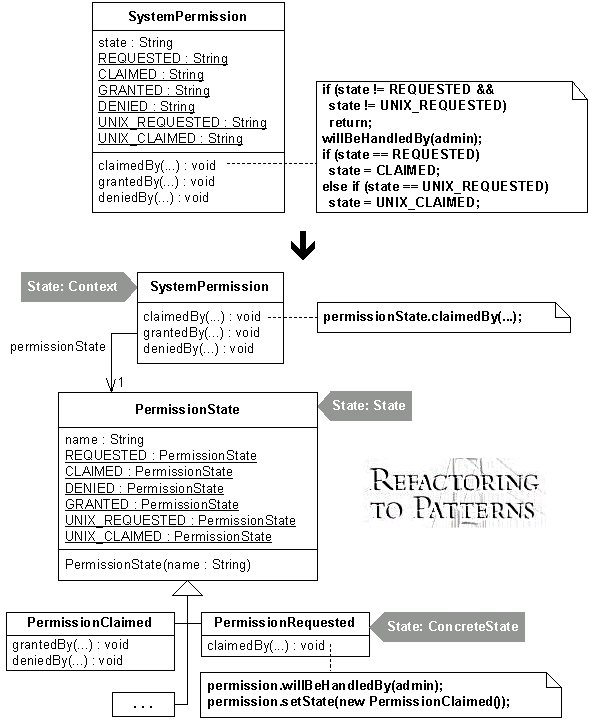In the state pattern you have an represent the state of an object by using state-objects. These state-objects represent a certain state, but they do not have any mutable state of their own. This means they never change. Therefore, any number of objects can use the same state-object at the same time (even from different threads). If the state-object had mutable state, other objects would have to worry about their state-object being changed from elsewhere.
The using of one object instance by many others can be seen as an instance of the flyweight-pattern.
As for the second part of your question, here is an example:
class SomeStateMachine;
class AbstractState {
// abstract baseclass for all state-classes
void input(const std::string & data, SomeStateMachine & caller) = 0;
}
class FinalState : public AbstractState {
FinalState * getInstance(); // always returns same instance
}
class InitialState : public AbstractState {
public:
InitialState * getInstance(); // always returns same instance
void input(const std::string & data, SomeStateMachine & caller) {
std::cout << data << std::endl;
caller.m_State = FinalState::getInstance();
}
}
class SomeStateMachine {
public:
SomeStateMachine() : m_State(InitialState::getInstance())
void input(const std::string & data) {
m_State->input(data, *this);
}
private:
friend class InitialState;
AbstractState * m_State;
};
So you basically pass a reference to the calling object to every method of your state-object. This way, the state-object is able to change the state of the caller when needed. This example might not be very beautiful, but I hope you get the idea.
